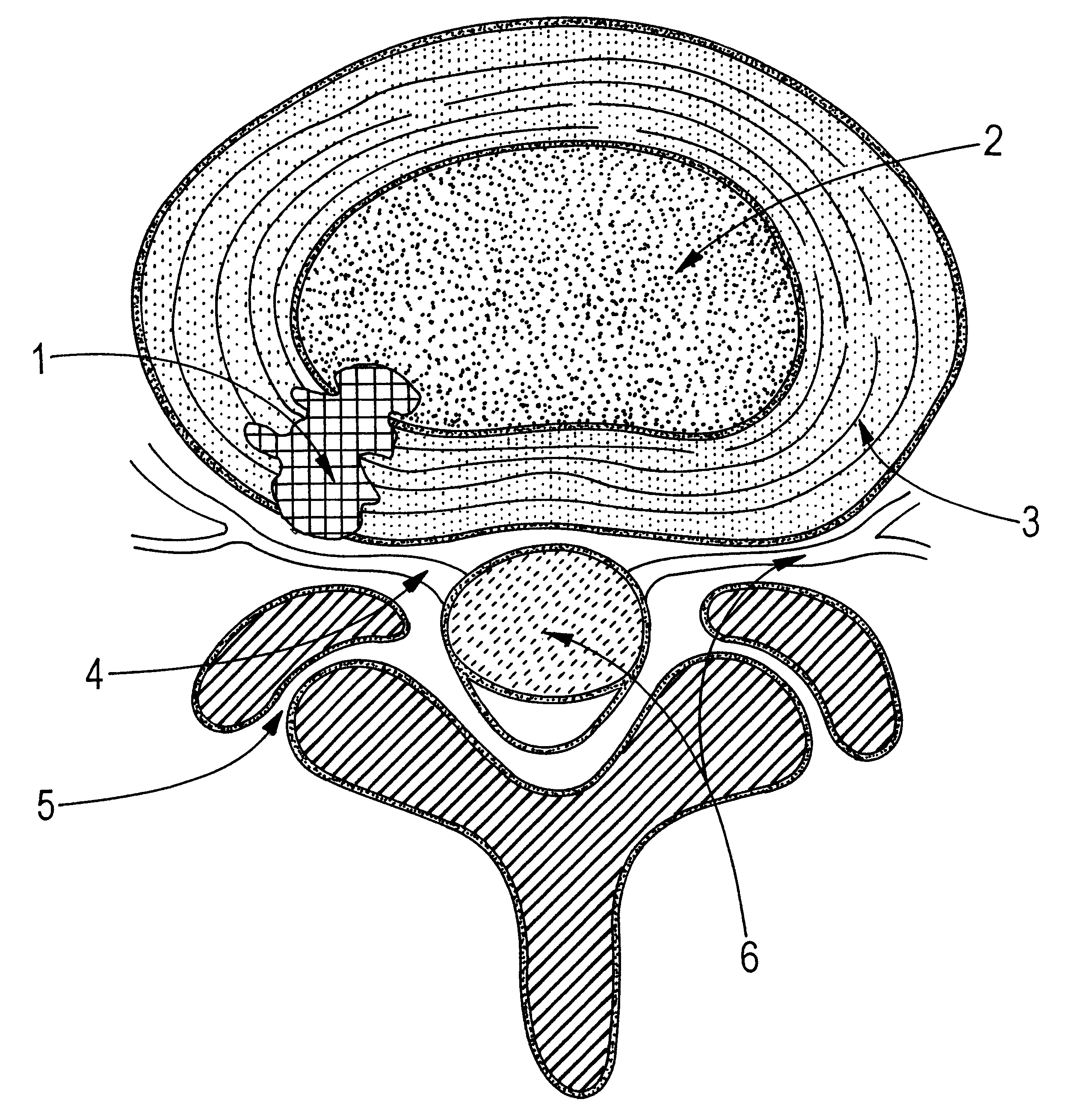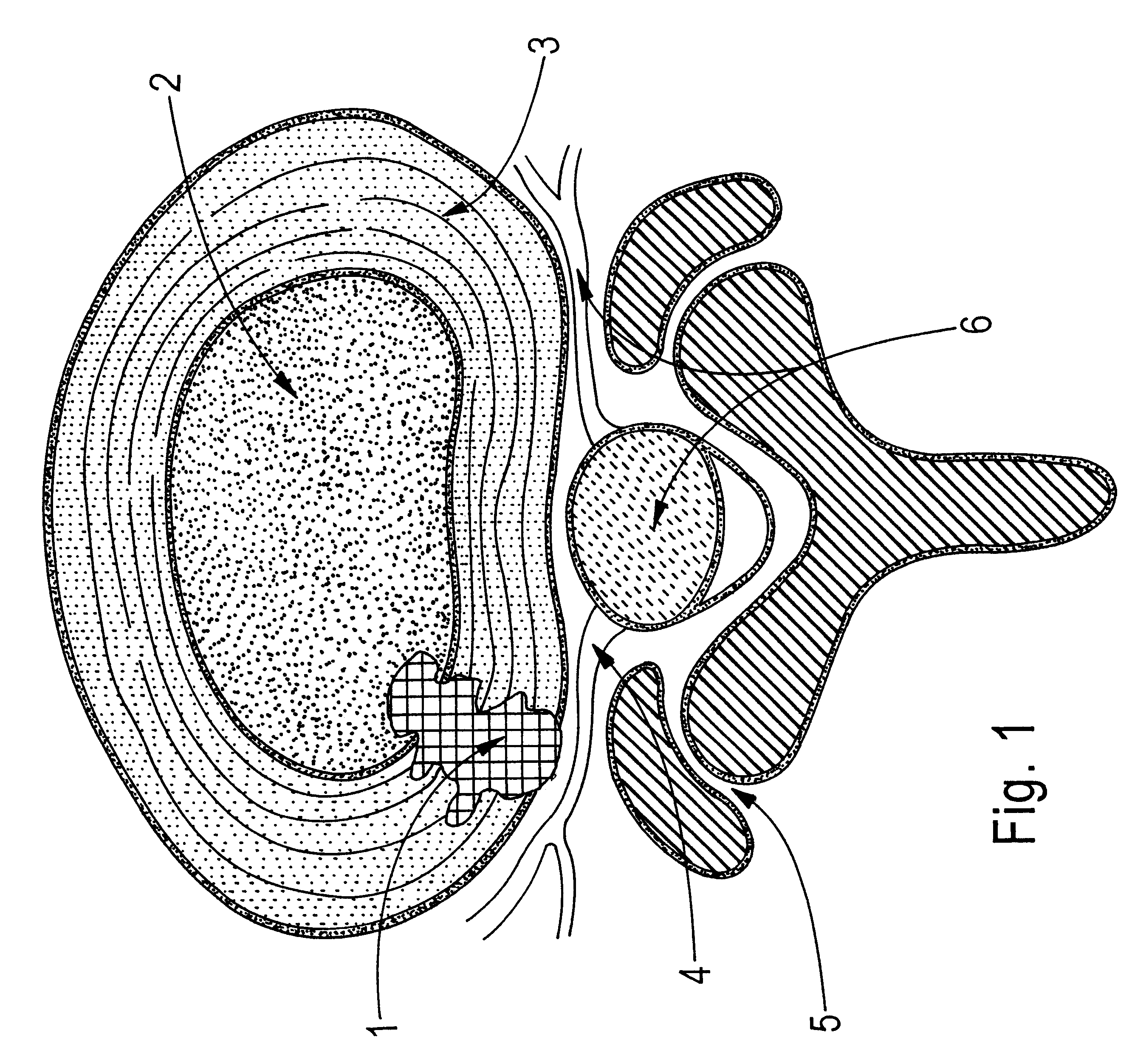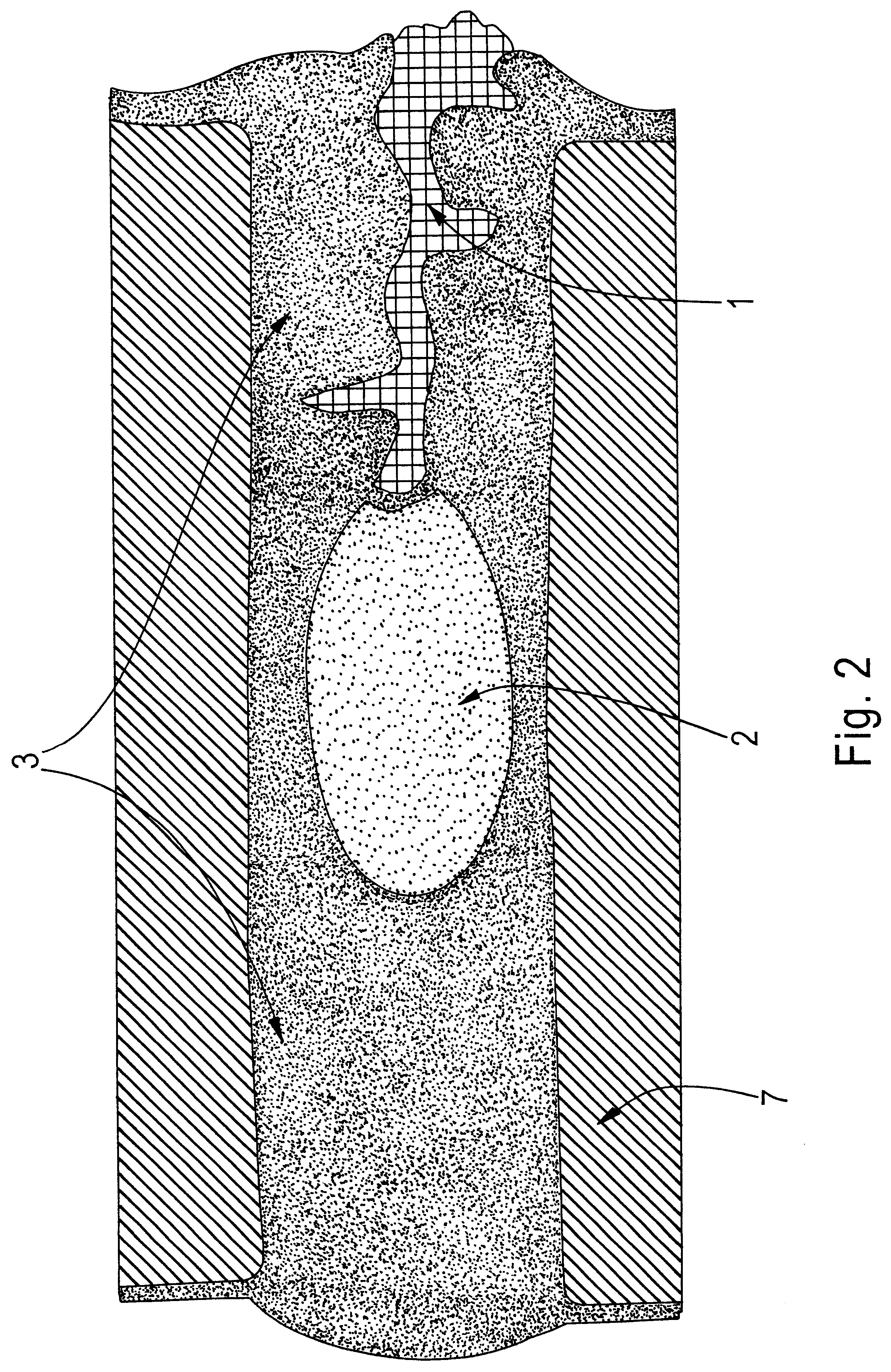System for repairing inter-vertebral discs
- Summary
- Abstract
- Description
- Claims
- Application Information
AI Technical Summary
Benefits of technology
Problems solved by technology
Method used
Image
Examples
example 1
A 105 mg / ml (10.5% W / V) aqueous solution of fibrillar collagen in 0.05 M sodium bicarbonate buffer and 0.15 M sodium chloride is adjusted to pH 9.5. 2.5 ml of this biomaterial solution (solution A) is aspirated into a dual chamber polypropylene cartridge through one of the two extrusion flanges of the cartridge. 2.5 ml of a solution of difunctionally activated N-succinimidyl carbonate PEG (DSC-PEG, MW 3600) in 0.005 M sodium carbonate / bicarbonate buffer and 0.15 M sodium chloride at pH 6.0 and in a 1 to 10 molar ratio of collagen (solution A) to DSG-PEG (solution B) is filled into the second chamber of the cartridge.
Both chambers of the cartridge are closed by attaching a spiral mixer nozzle (3.2 mm inner diameter, 6.2 cm length, 0.38 ml void volume) onto the dual extrusion flanges. The cartridge is placed into a manual application instrument that allows for a reproducible and volume controlled extrusion of the bio-material in increments of 0.5 ml per step. A blunt tip aspiration ne...
example 2
A 380 mg / ml (38% w / v) aqueous solution of human serum albumin (MW 68000) in 0.1 M sodium bicarbonate buffer and 0.15 M sodium chloride is adjusted to pH 8.2 (solution A buffered protein solution). A 200 mg / ml (25% w / v) aqueous solution of difunctionally activated N-succinimidyl propionate PEG (DSP-PEG, MW 3400) in 0.01 M sodium carbonate / bicarbonate buffer at pH 6.0 is prepared as solution B (cross linking agent). Solutions A and B are placed in the dual chamber cartridge and applied in the animal annulotomy model as described in Example 1. In this Example 2, the application of the sealant without delays is particularly important because of the short curing time of this type of sealant (2-3 minutes).
example 3
180 mg / ml (18% w / v) of PEG tetraacrylate (MW 8200) is dissolved in a buffer of 0.02 M sodium phosphate at pH 7.4 and 0.15 M sodium chloride. Ammonium persulfate (0.01 M) and sodium bisulfite (0.005 M) are added to the solution that now represents the polymerizable bio-material with thermal polymerization initiation system. 5 ml of this bio-material solution is aspirated into a polypropylene syringe that is fitted with a Luer type adapter tip. The syringe is closed by placing a temperature-controlled, flow through heating cylinder, that is connected to a control unit, onto the tip of the syringe. The syringe is placed into a manual application instrument that allows for a reproducible and volume-controlled extrusion of the bio-material in increments of 0.25 ml per step. A blunt tip aspiration needle (18 gauge, 90 mm) is placed on the tip of the heating cylinder. The handle of the application instrument is pressed four times (4.times.0.25 ml) in order to fill the void of the heating c...
PUM
| Property | Measurement | Unit |
|---|---|---|
| Time | aaaaa | aaaaa |
| Composition | aaaaa | aaaaa |
| Flow rate | aaaaa | aaaaa |
Abstract
Description
Claims
Application Information
 Login to View More
Login to View More - R&D
- Intellectual Property
- Life Sciences
- Materials
- Tech Scout
- Unparalleled Data Quality
- Higher Quality Content
- 60% Fewer Hallucinations
Browse by: Latest US Patents, China's latest patents, Technical Efficacy Thesaurus, Application Domain, Technology Topic, Popular Technical Reports.
© 2025 PatSnap. All rights reserved.Legal|Privacy policy|Modern Slavery Act Transparency Statement|Sitemap|About US| Contact US: help@patsnap.com



